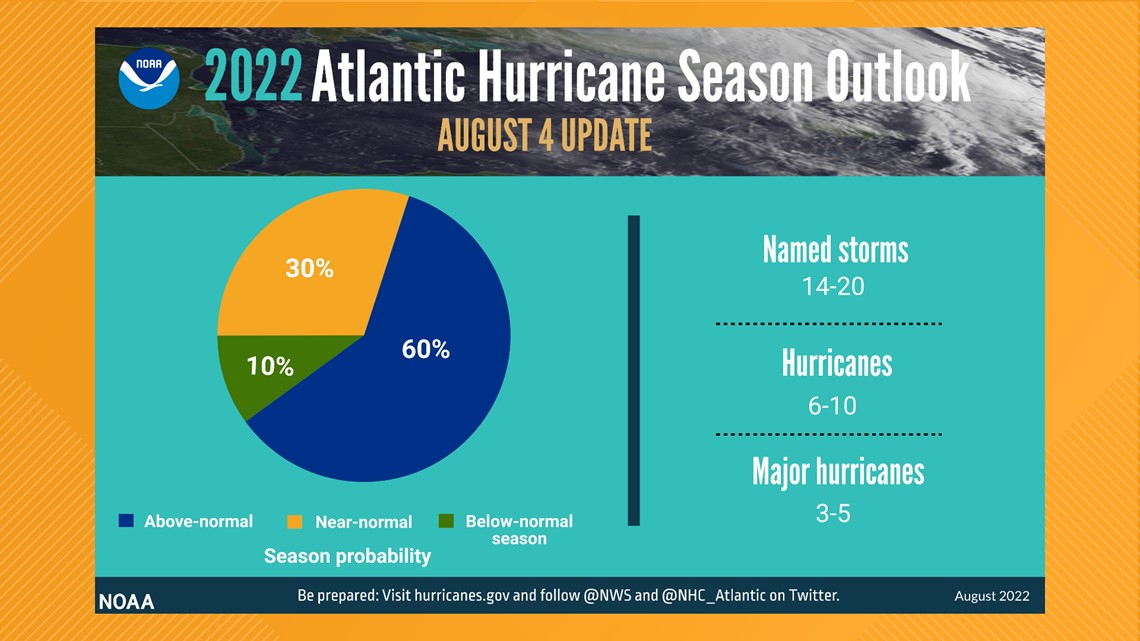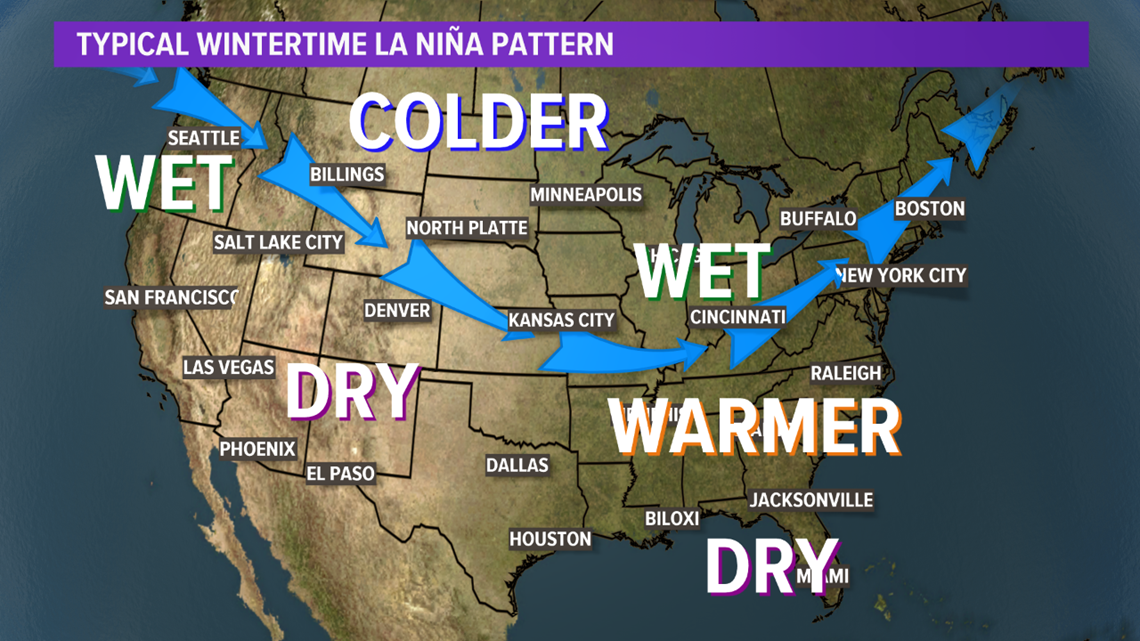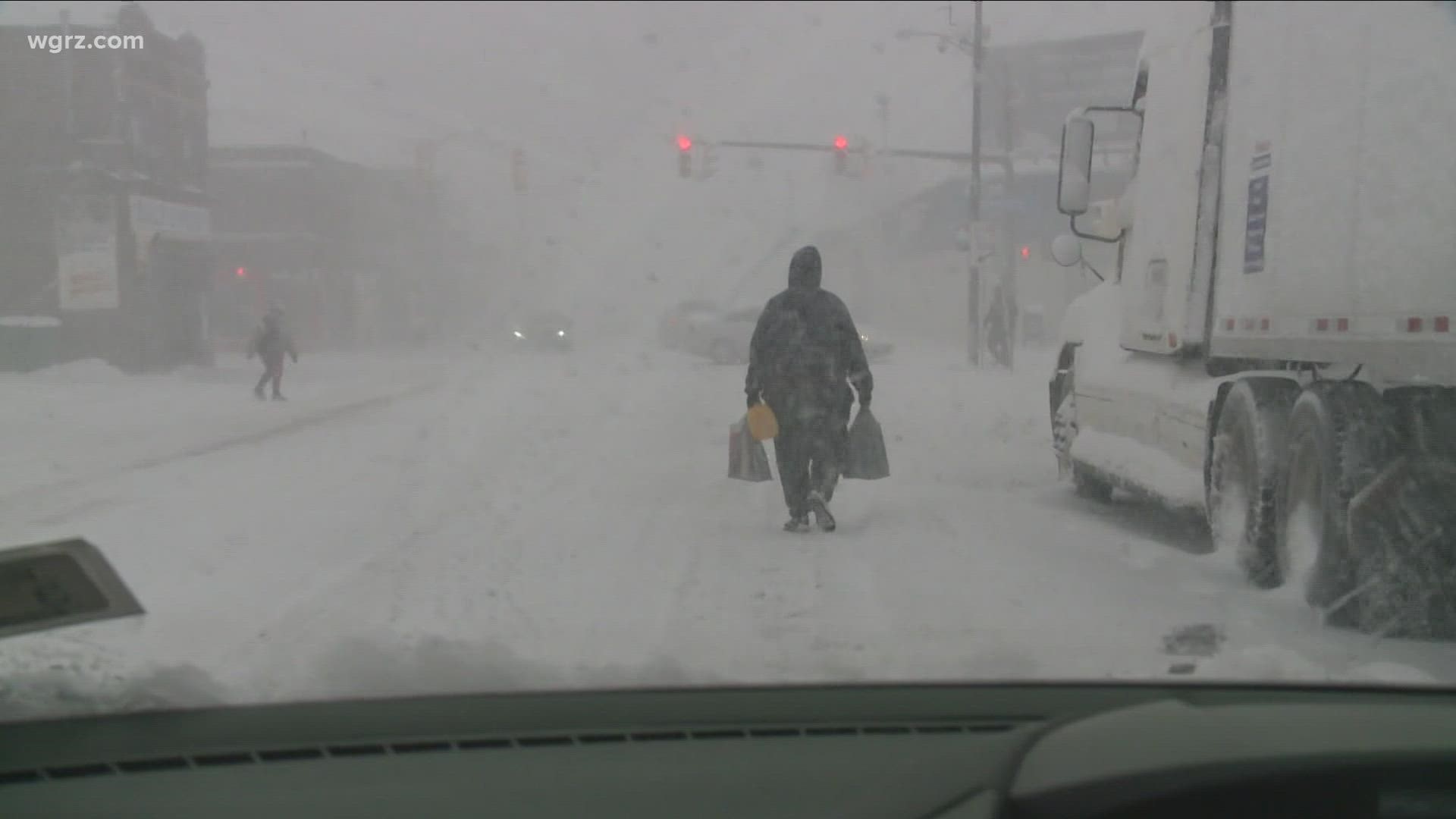BUFFALO, N.Y. — In a recent update from the Climate Prediction Center, climate forecasters expect the current La Niña conditions present over the eastern Equatorial Pacific Ocean to continue this fall.
But they hinted at the potential for the event to slowly decrease in strength heading into the Northern Hemisphere wintertime months.
Forecasters noted how the presence of below-average sea surface temperatures actually expanded in area within the past month. Upwelling from Kelvin waves over the east-central Pacific Ocean enhanced the depth of the cooler water temperatures that are a staple of La Niñas. Couple that with a La Niña sea to air pattern, this La Niña shows no sign of slowing down over the next few months.
And with the peak of the Atlantic Hurricane season fast approaching, the importance now turns to how the existing La Niña could impact the rest of the season. It's been a very quiet start to the season so far with only three named storms since June 1st. In fact, from July 3rd through August 15th there was no mention of any tropical activity. This is because of Saharan Dust that limited tropical cyclone development over that 6 week period.
That being said, NOAA and the National Hurricane Center (NHC) are still predicting an above average Atlantic Hurricane season for the remainder of it. This is due to, in part, the existing and continuing La Niña as well as other factors like the onset of the West African Monsoon and weaker trade winds over the Atlantic Ocean.


El Niño Southern Oscillation (ENSO) is a large, naturally occurring ocean to atmosphere phenomenon located over the equatorial Pacific Ocean. Its positive phase is an El Niño and negative phase is a La Niña. It's closely monitored year round as it can influence weather patterns across the Northern Hemisphere, especially during the fall, winter and even spring months.
Storm Team 2 will be keeping a close eye on the existing La Niña over the next few months to see if it could potentially impact this winter across Western New York.


RELATED VIDEO:

